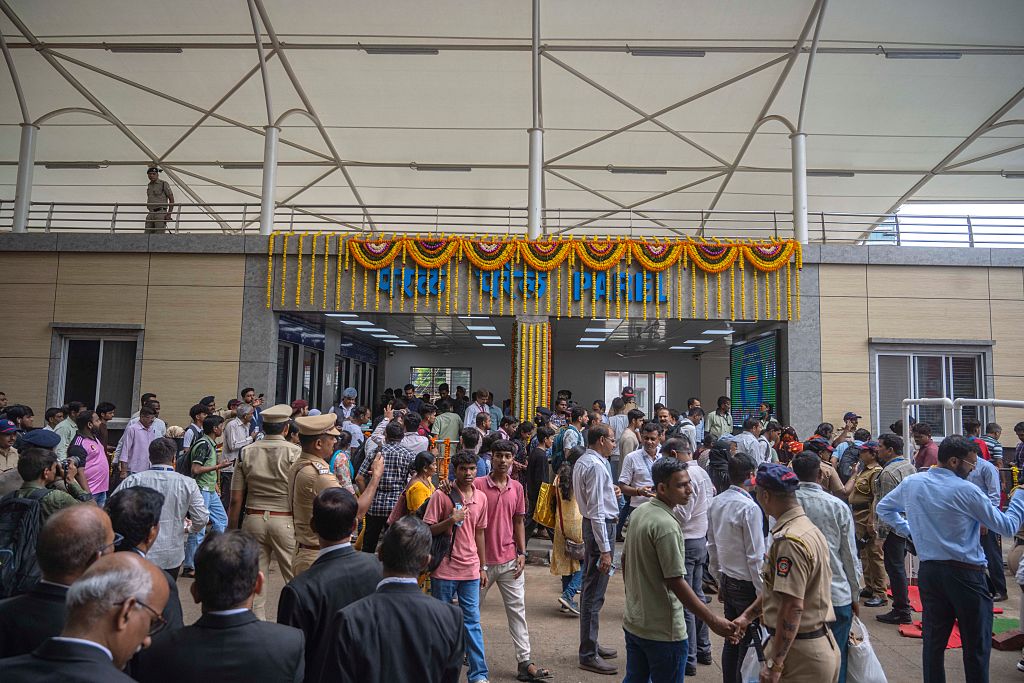Prime Minister Narendra Modi inaugurated 103 redeveloped railway stations under the Amrit Bharat Station Scheme on Thursday, marking a historic leap towards modernizing Indian Railways.
Amrit Bharat Station Scheme
The Amrit Bharat Station Scheme is a long-term plan to redevelop and modernize railway stations across India in a phased manner in order to elevate the travel experience for millions of passengers. Under this scheme, detailed plans are made for each station and the work is done in phases, based on what each station needs.
The origin of the Amrit Bharat Stations scheme can be traced back to 2021, when Gandhinagar became the first Railway station to undergo modernization, replete with all modern facilities and a five star hotel. Later on in the same year, Rani Kamalapati Railway Station, formerly known as Habibganj wore a new look.
The goal of the scheme is to make stations cleaner, more comfortable, and easier to use. Local products will be sold at kiosks under the ‘One Station One Product’ scheme, and efforts will be made to make stations look greener and more attractive.
The Amrit Bharat Mission scheme also focuses on upgrading the station buildings, connecting both sides of the city through the station, and linking stations with other transport options like buses and metros. Special care is being taken to make stations friendly for Divyangs. Eco-friendly solutions, noise-free tracks, and better planning are also part of the improvements.
Key features of Amrit Bharat Stations
Equipped with modern amenities, these stations have been upgraded and redeveloped under the Amrit Bharat Station Scheme as city centres, showcasing regional culture and heritage.
The scheme envisages building modern passenger amenities like aesthetically designed façade, resurfaced platforms, beautiful landscaping, roof plaza, kiosks, food courts, kids play area among others.
The designs of redeveloped station buildings is inspired by local culture, heritage and architecture. While the Ahmedabad station draws inspiration from the Modhera Sun Temple, Dwarka station is inspired by the Dwarkadheesh Temple. While Gurugram station will carry the IT theme, the Baleshwar station in Odisha will be designed on theme of Bhagwan Jagannath Temple. The influence of the Chola architecture will reflect in the Kumbhakonam Station in Tamil Nadu. Deshnoke railway station, which serves tourists and pilgrims visiting the Karni Mata Temple among others, is inspired with temple architecture and arch and column theme. Begumpet railway station in Telangana is inspired by the architecture of the Kakatiya empire. Thawe station in Bihar incorporates various murals and art works representing Maa Thawewali, one of the 52 Shakti Peethas and depicting Madhubani paintings. Dakor station in Gujarat is inspired by Ranchhodrai Ji Maharaj.
Some key features of these stations include enhanced passenger information systems, free Wi-Fi, wider roads, well-constructed underpasses, foot overbridges, modern waiting areas, executive lounges, spacious circulating areas, grand porches, enhanced parking facilities, alongside improved lighting arrangements, modern restrooms, and lifts, all designed to be disability-friendly.
Over 1,300 stations are being redeveloped with modern facilities, designed to reflect regional architecture and enhance passenger amenities under the Amrit Bharat Station Scheme.
The 103 stations inaugurated by PM Modi on May 22 are spread across 86 districts in 18 states and union territories and were developed at a cost of over Rs 1,100 crore. Out of these 19 are in Uttar Pradesh; 18 in Gujarat; 15 in Maharashtra; 9 in Tamil Nadu; 8 in Rajasthan; 6 in Madhya Pradesh; 5 each in Karnataka and Chhattisgarh; 3 each in West Bengal, Jharkhand and Telangana; 2 each in Bihar and Kerala; 1 each in Haryana, Himachal Pradesh, Assam, Andhra Pradesh and Puducherry.














